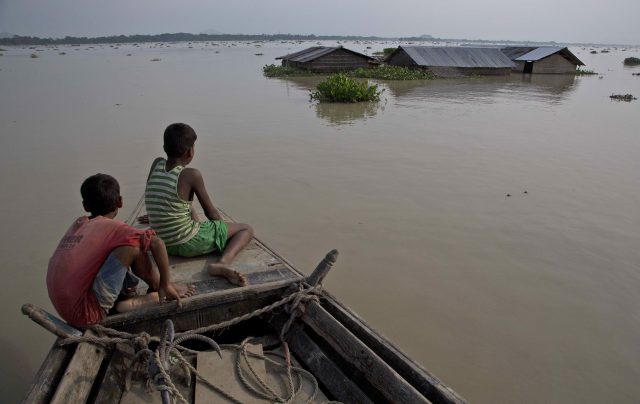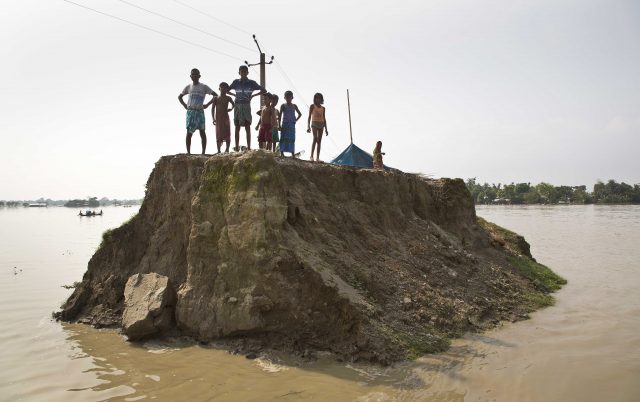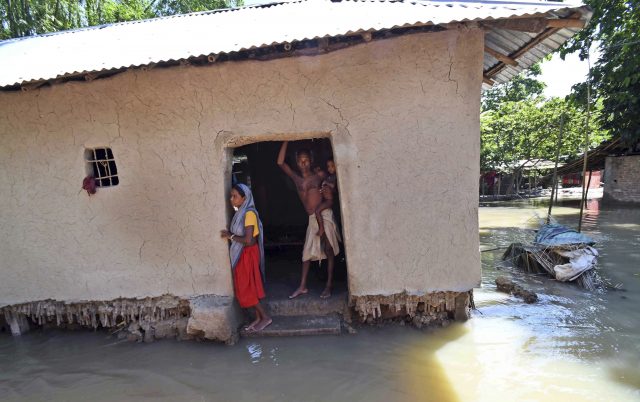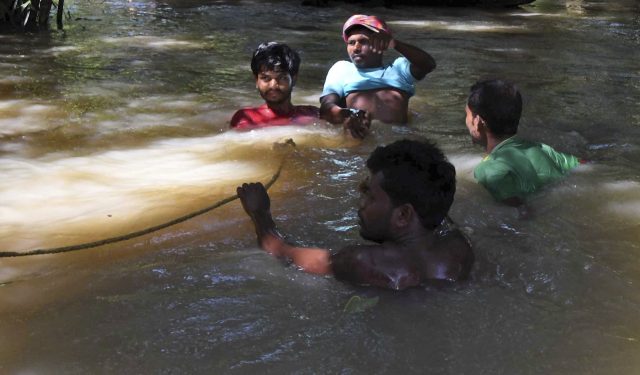More than 950 killed in monsoon floods across South Asia
The northern Indian states of Bihar, Uttar Pradesh, West Bengal and Assam are the worst hit areas, with more than 600 dead.

Devastating floods triggered by monsoon rains have killed more than 950 people and displaced close to 40 million people across northern India, southern Nepal and northern Bangladesh in recent days.
The rains have led to wide-scale flooding in a broad arc stretching across the Himalayan foothills in the three countries, causing landslides, damaging roads and electric towers and washing away tens of thousands of homes and crops.
The northern Indian states of Bihar, Uttar Pradesh, West Bengal and Assam are the worst hit, accounting for the deaths of 680 people, most of them from drowning, snake bites or landslides.
South Asia’s monsoon rains last between June and September.

Disaster management authorities in Bihar said the state’s death toll of 367 could go up further as floodwaters recede and bodies are recovered from submerged houses.
Army soldiers and volunteers have evacuated around 770,000 people from inundated areas.
Of these, some 425,000 were living in 1,360 relief camps set up in school and government buildings, said Avinash Kumar, a Bihar state official.
In neighbouring Uttar Pradesh, the state government said around 2.3 million people in 25 districts have been affected by the floods after at least three major rivers overflowed their banks, entering fields and homes.

An Uttar Pradesh government spokesman blamed the unprecedented flooding on the release of water from dams in upstream Nepal.
“Rains have been intense but the release of water from Nepal has aggravated the situation,” said Manish Sharma.
Soldiers have been helping to evacuate people marooned on rooftops or trees, while air force helicopters dropped food, drinking water and medicines to those camping on higher ground.
Officials are bracing for the threat of infections as floodwaters recede.
Health workers have begun sending supplies of mosquito repellent, bleaching powder and water purification tablets to the worst-hit areas.

In the eastern state of West Bengal, the top elected official, Chief Minister Mamata Banerjee, said 152 people had died and 15 million had been affected by floods in the past few weeks.
Another 71 people were killed in Assam as rivers breached their banks and entered low-lying villages.
At the Kaziranga National Park, around 300 animals, including two dozen rhinos and a Royal Bengal tiger, have been killed after floodwaters submerged 80% of the wildlife park.
In Bangladesh, the death toll climbed to 132 while some 7.5 million people have been affected in this year’s floods.

Crops on more than 10,000 hectares (24,710 acres) of land have been washed away while another 600,000 hectares (1,482,600 acres) have been damaged, posing a serious threat to food production, the ministry said.
Nepal’s Home Ministry spokesman Ram Krishna Subedi said floodwaters were receding and rivers were returning to normal.
The death toll from the floods in Nepal stood at 146, with about 30 missing.





